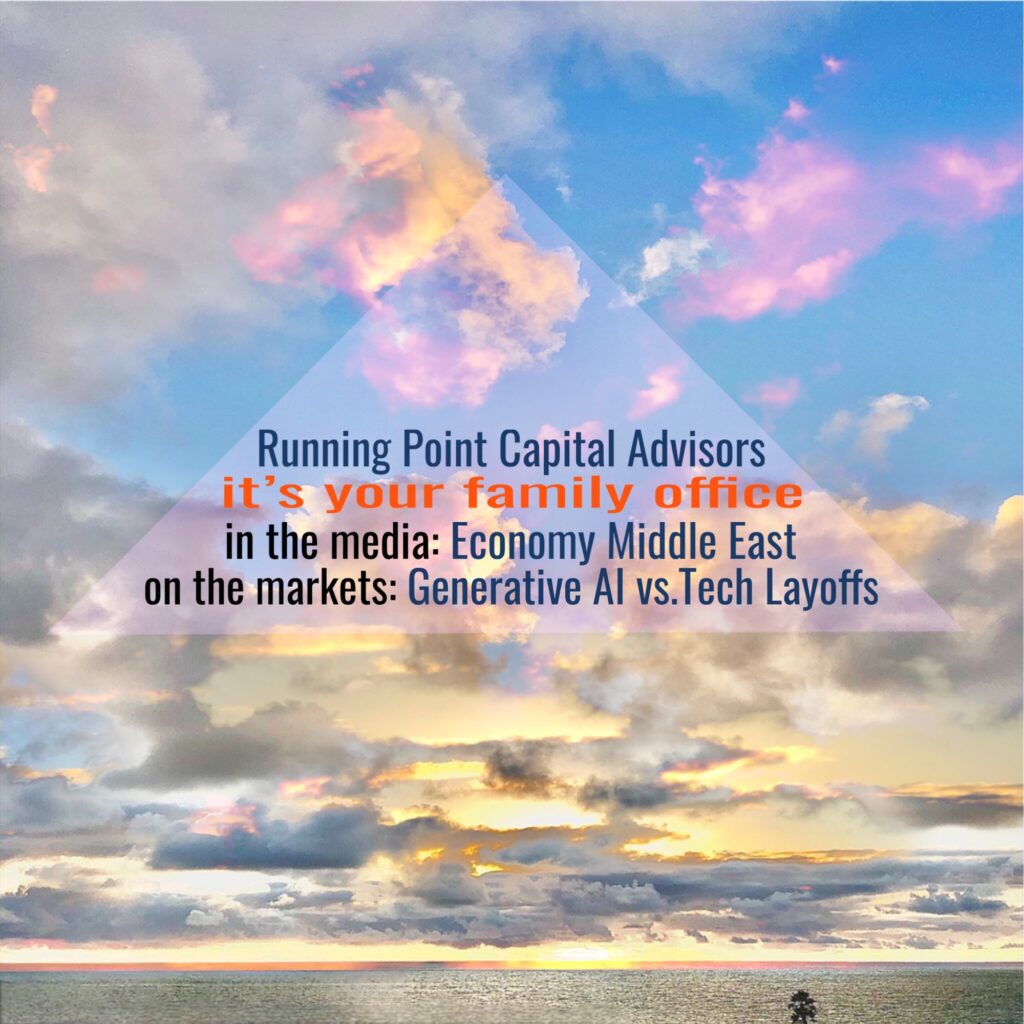Artificial Intelligence vs. Layoffs: What is the outlook for stocks and tech stocks?
Running Point and its chief investment officer, Michael Ashley Schulman, CFA, were quoted by Economy Middle East in an article — by Mayank Sharma, “Do falling stock prices signal troubling times for Big Tech?” — regarding Microsoft’s latest quarterly earnings report and what it signals for large capitalization technology stocks as well as the rest of the U.S. stock market.
“once we get beyond any economic slump, the long-term outlook seems favorable for increased implementation of technology and generative AI to improve productivity”
Three technology camps!
Undoubtedly, Microsoft is considered a national and global bellwether for corporate technology spending which in itself is a bellwether for global growth.
To determine whether these are troubling times, one should divide the tech world into three camps:
- Those companies that have consistently posted profits for years like Adobe, Alphabet, and Apple
- Firms that are just beginning to make money like UBER, Unity Software, and Snowflake
- And those that have only churned out losses like Teladoc and Roblox
Clearly, Microsoft is in the first camp and their earning’s outlook does not seem especially troubling. On the contrary, once we overcome any possible economic downturn, the long-term prospects appear positive for increased adoption of technology and generative artificial intelligence (AI) to boost corporate productivity.
Quoted article excerpts are below:
Michael Ashley Schulman, Founding Partner and Chief Investment Officer (CIO) at Running Point Capital Advisors says the figures can’t be ignored since Microsoft is considered a national and global bellwether for corporate technology spending, which in itself is a bellwether for global growth.
“Microsoft’s morning stock slide and the FAANG sell off in sympathy was a knee jerk reaction to reported numbers that would have been stellar for most companies but were slightly disappointing to Microsoft analysts that had slightly higher growth and revenue expectations,” believes Schulman.
Stock prices, Schulman explains, are based on forward projections, and on average analysts had hoped for over $52 billion in revenues next quarter, but management projected a slightly lower $50.5 billion to $51.5 billion in revenue.
“If a stock is priced for perfection, a shortfall may be considered a major stumbling block. However, Microsoft is already down approximately -30% from its November 2021 highs, so for a $1.8 trillion company, a significant amount of relinquishment and distress is already built into its price,” spells out Schulman.
During its earnings call, Microsoft’s CEO, Satya Nadella, said Microsoft would focus on Artificial Intelligence (AI) technology, hailing it as the next major wave of computing. This is in line with Microsoft’s recent multi-billion dollar investments in OpenAI, the startup behind ChatGPT, which it has been funding since 2019.
This makes Schulman double down on his assertion that the numbers posted by Microsoft aren’t troubling at all. “Rather just the opposite; once we get beyond any economic slump, the long-term outlook seems favorable for increased implementation of technology and generative AI to improve productivity,” argues Schulman.

Disclosure: The opinions expressed are those of Running Point Capital Advisors, LLC (Running Point) and are subject to change without notice. The opinions referenced are as of the date of publication, may be modified due to changes in the market or economic conditions, and may not necessarily come to pass. Past performance is not indicative of future results. Forward-looking statements cannot be guaranteed. Running Point is an investment adviser registered with the U.S. Securities and Exchange Commission. Registration does not imply a certain level of skill or training. More information about Running Point’s investment advisory services and fees can be found in its Form ADV Part 2, which is available upon request. RP-23-11


